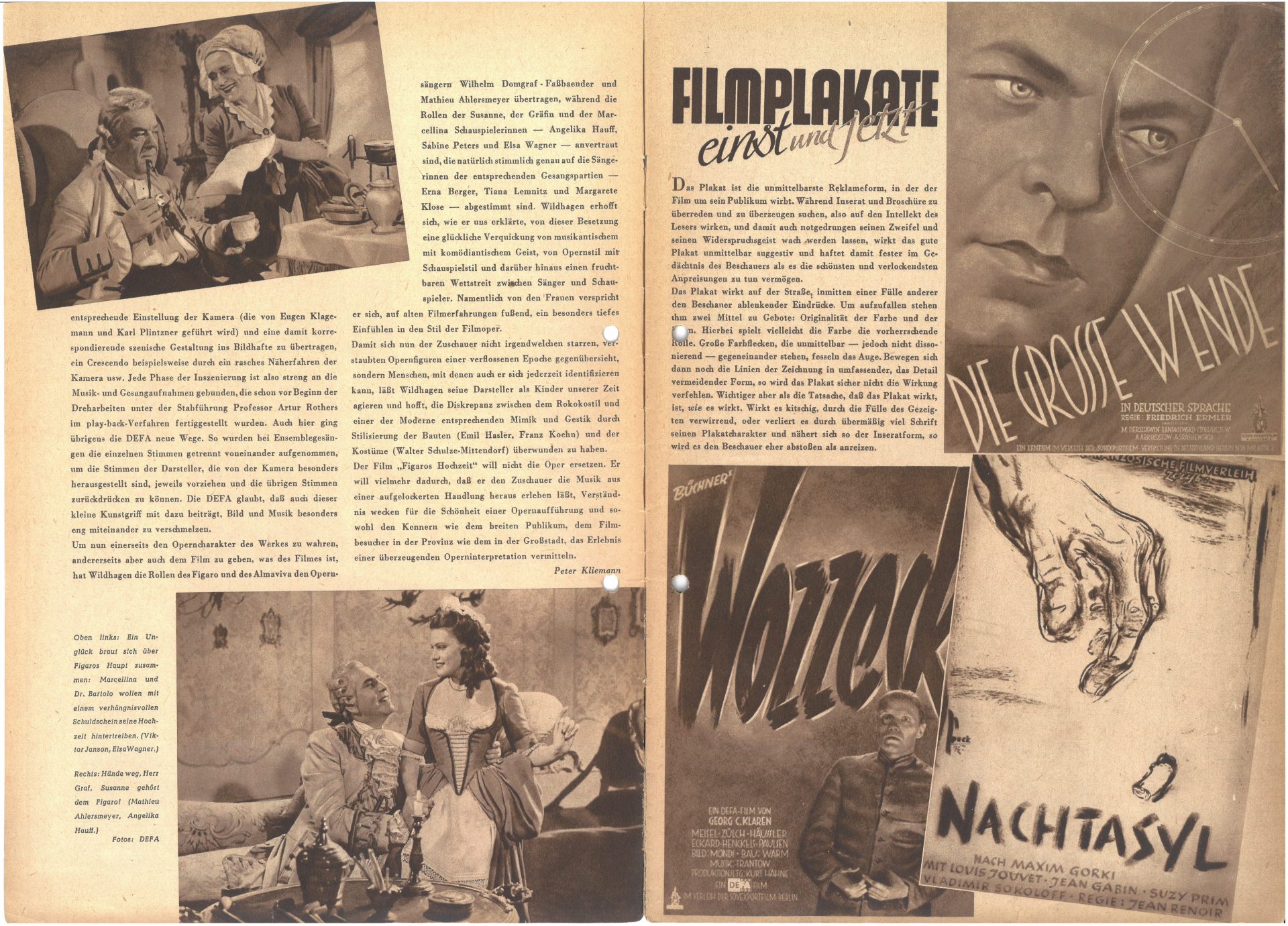Dr. Vincent Fröhlich is head of sub-project 8 »Seeing Film between the Lines: Remediation and Aesthetics of the Film Periodical« which is part of the research unit Journalliteratur. The project is situated at the Institute for Media Studies at the University of Marburg. Previously, he was a research assistant in sub-project 5 »Fragment Constellations« lead by Jens Ruchatz, which analyzed photography and layout phenomena in illustrated magazines of the 19th century. His research interests encompass: photography, film paratexts, periodical studies, layout, seriality and serial narration, cliffhanger, TV studies, radio history and material philology.
My Research

The Neue Filmwelt was published on 1st of August 1947 (1947‒1953) in the Soviet-occupied Eastern Zone under the licence SMA: 301. This magazine has so far been totally neglected, although it was one of the first German illustrated film magazines after the Second World War and an important figure, the DEFA co-founder Karl Hans Bergmann, was initially its editor. Not much is known about the production background of this magazine. The autobiography of Karl Hans Bergmann, who has since passed away, as well as a video recording of a conversation with him provide some insights into the turbulent history of this magazine’s production.
Abstract
Film Is What Belongs to Film. The Reuse of Photographic Pictures and Typographies in Illustrated Film Magazines
So far, illustrated film magazines have mainly been included in research as secondary objects – the focus was instead on journalistic, political or historical aspects. In this paper, however, the mediality and visuality of illustrated film magazines will be the focus of attention. As an important aspect of this mediality, it will be shown in what ways exemplary German (e.g. Neue Filmwelt) illustrated film magazines remediate film, especially through the reuse of images and typographies, by referring to other print publications and places of film representation. Examples will demonstrate how illustrated film magazines incorporate and transform poster layouts, illustrations and typographies, poster photos, lobby and cigarette cards into a journal-specific layout.
The general thesis is that the representation of the medium film entails that media also representing film are included, or at least approached, in the film journal’s specific representation. What film is in the illustrated film magazine is above all what is understood as film, and what other representations of film in other media understand as being filmic. Thus, such representations allow us to gain knowledge about the understanding of the media involved in the illustrated film journal at a given time: it is a constant negotiation of medial self-perception/self-presentation (magazine) and of the reference to other media (photography and film). Not only other media are referenced here, but also places of media representation, such as movie theatre showcases, as important places that shape the perception of the said medium. Each time these different processes of representation mean that the medium to be represented, or more specifically, certain characteristics relative to the medium to be represented, are transformed into the aesthetics inherent to the medium to be represented, the illustrated film magazine.
Recent Publications
»Die vielen fotografischen Papierbilder des Films. Über Präsentationsformen von Filmstills.« Rundbrief Fotografie, Vol. 27, Nr. 3, 2020, S. 8-21.
»A/Symmetry and Dis/order: Data-based Reflections on Balancing Stability and Change in Illustrated Magazines from 1906-1910.« In: FOR 2288 (Ed.): Visuelles Design: die Journalseite als gestaltete Fläche / Visual Design: The Periodical Page as a Designed Surface. Hannover: Wehrhahn Verlag, 2019, S. 85-117.

